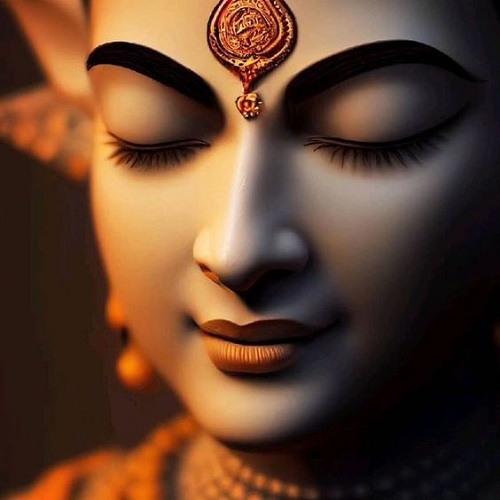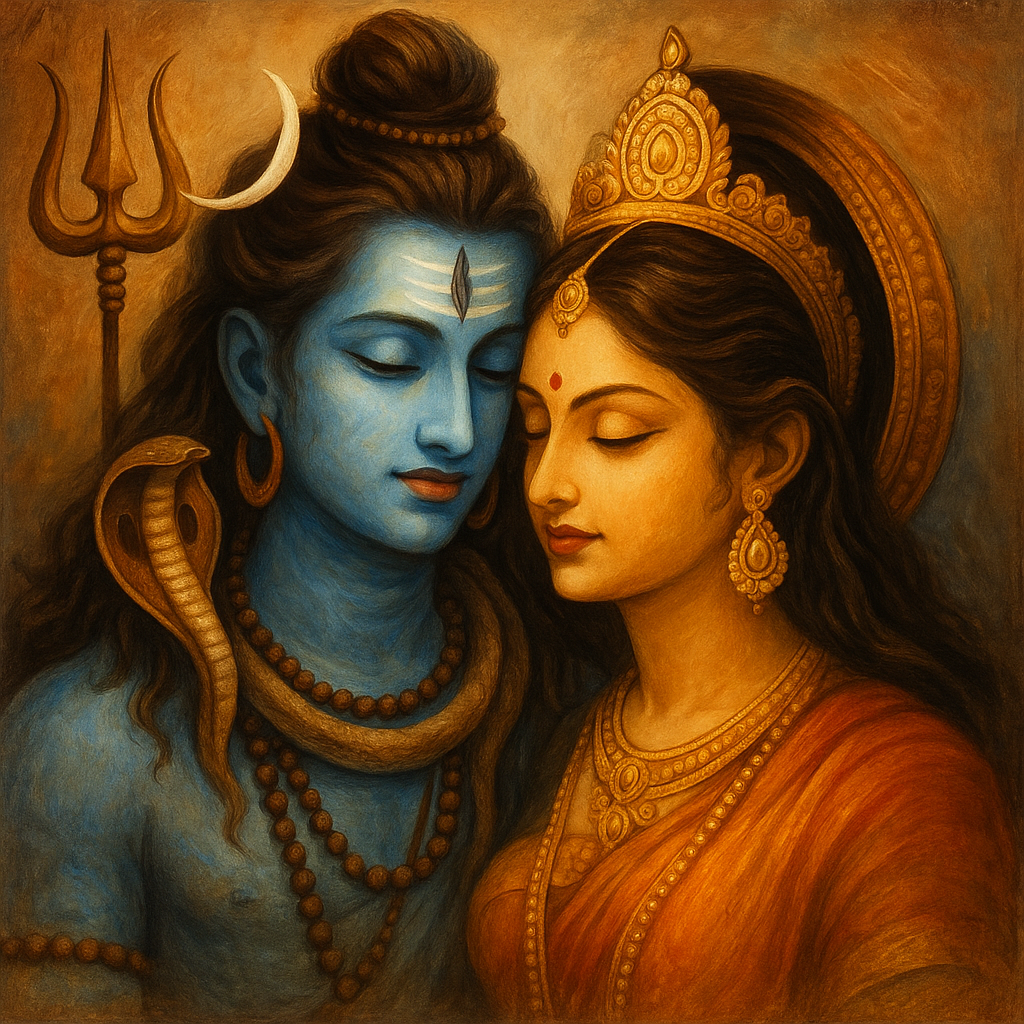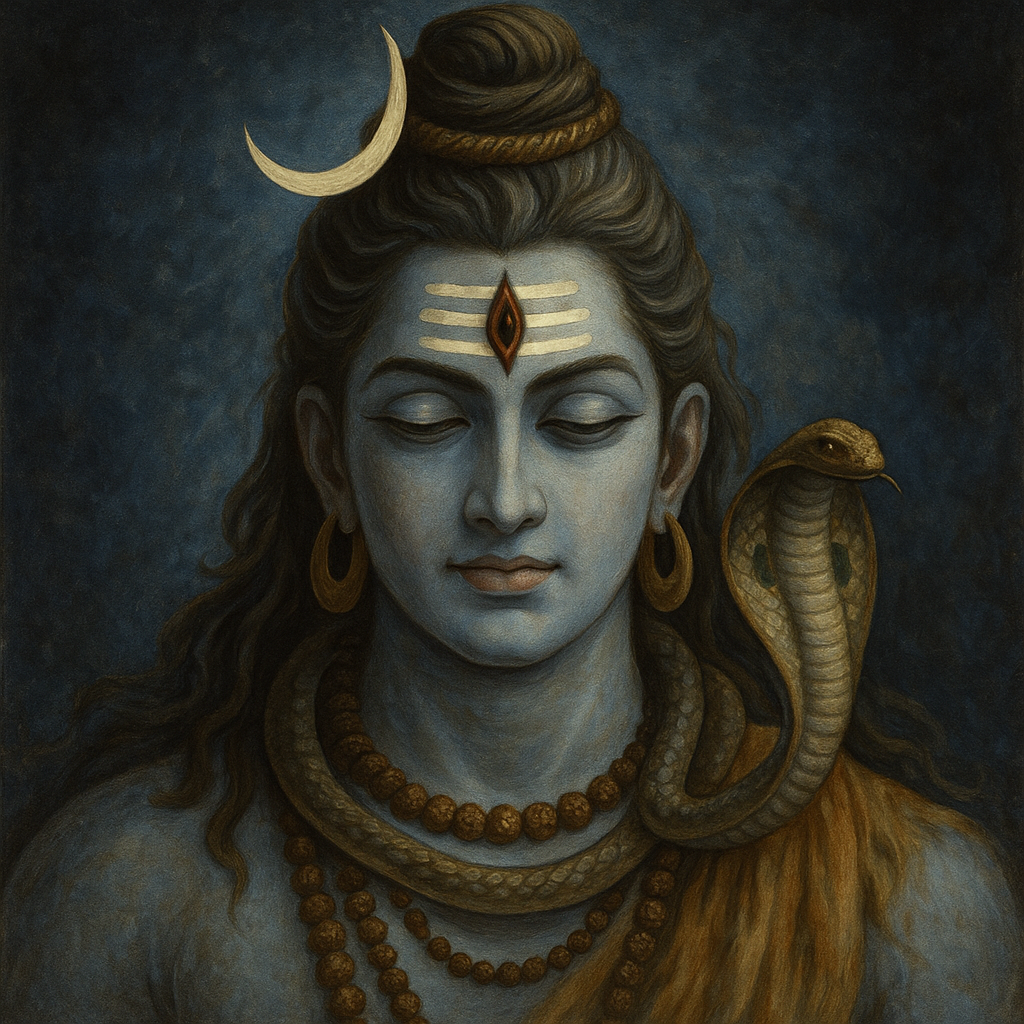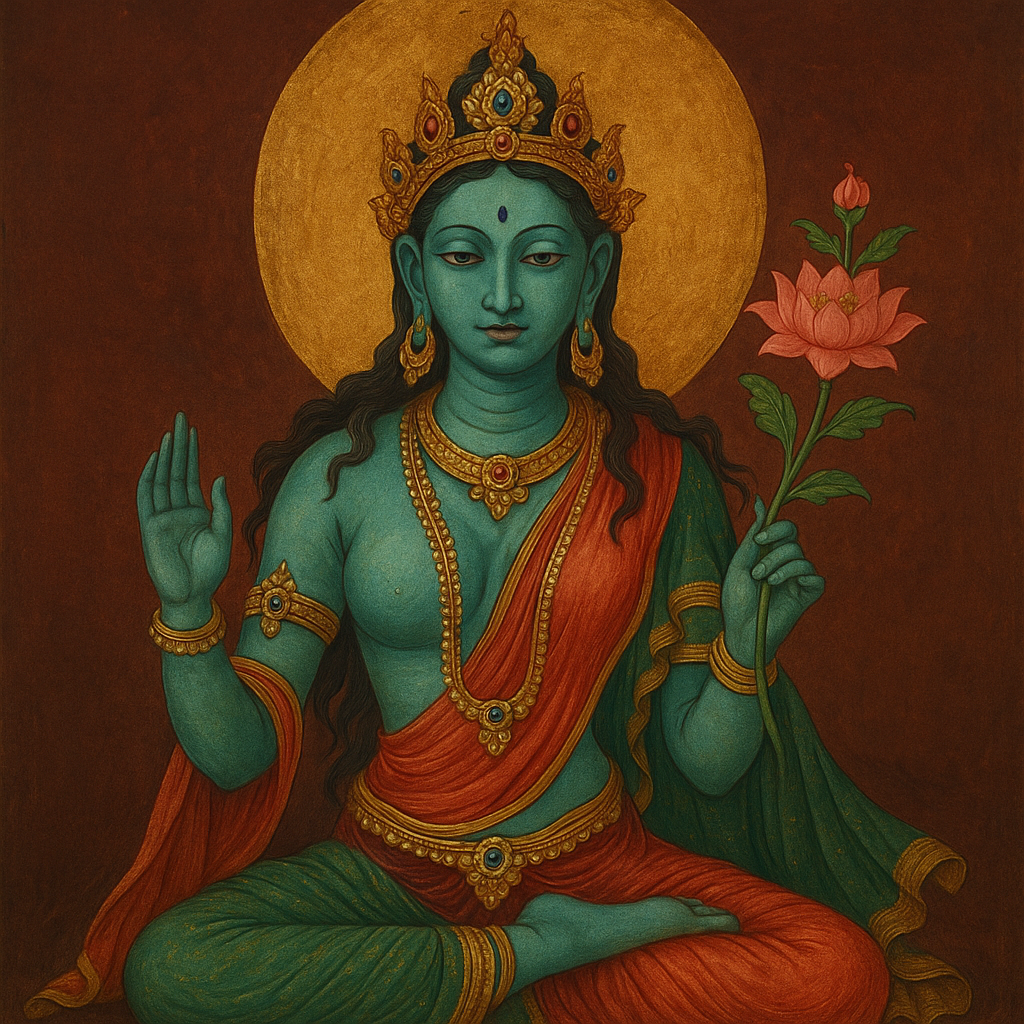Why Lord Ganesha Has an Elephant Head: The Spiritual Secret Behind His Divine Form
Among all deities in the Hindu pantheon, no form is as instantly recognizable, or as symbolically profound, as that of Lord Ganesha with His elephant head. Children are drawn to His playful image, artists are inspired by His majestic form, and devotees bow to Him before every new beginning. But beneath His beloved appearance lies a mystical story of creation, destruction, and transformation. A tale that holds deep spiritual meaning for every seeker on the path of truth.
Why was a child born from the body of a goddess beheaded? Why was he revived with the head of an elephant? And what does this transformation tell us about our own spiritual journey?
In this article, we go beyond the surface of the story to explore why Ganesha's elephant head is not just a myth, but a powerful metaphor for awakening, one that speaks of ego, cosmic intelligence, and the soul's return to its true self.
Who is Lord Ganesha?
Lord Ganesha is the embodiment of divine intelligence, grounded strength, and unconditional compassion. He is the one whom devotees first remember at the start of every prayer, ritual, or important task. Known as the Remover of Obstacles (Vighnaharta) and the Lord of Beginnings, His presence is invoked for clarity, protection, and success.
Born from Goddess Parvati and spiritually aligned with Lord Shiva, Ganesha is both a cosmic principle and a deeply personal deity. He represents the first spark of awareness that allows the soul to navigate the complexities of life. His brother, Kartikeya, is a symbol of courage, while Ganesha governs the inner world of thought, intellect, and discernment.
Though His form is playful and inviting, His essence is profound. Ganesha is the guardian of the Muladhara Chakra, the root energy centre, grounding the seeker in stability before they rise toward higher states of consciousness.
Every aspect of His being, from His large ears to His broken tusk, tells a story, not just of a deity, but of the soul's transformation from ego to enlightenment.
The Divine Birth of Ganesha and the Mystery of His Elephant Head
The story of Lord Ganesha's birth is one of the most mystical and symbol-rich narratives in Hinduism. It's not just a tale of how a deity came to be, it's a powerful allegory of ego, identity, transformation, and divine awakening.
According to the Shiva Purana, when Goddess Parvati desired privacy while bathing, she created a child from the turmeric paste on her body. A form infused with her own divine energy. This child, born out of love and intention, was Ganesha. She instructed Him to guard her quarters and let no one enter.
As fate would have it, Lord Shiva returned home and was denied entry by the child, unaware of who he was. What followed was a cosmic misunderstanding. In a surge of divine fury, Shiva severed the boy's head, an act that shattered Parvati's heart and disturbed the celestial balance.
To restore life and cosmic order, Shiva ordered His attendants to bring the head of the first living being they found facing north. That being was an elephant, an ancient symbol of wisdom and memory. The elephant's head was fixed onto the child's body, giving rise to Ganesha, the Lord of Intellect and Remover of Obstacles.
What seems like a myth is, in truth, a map of human transformation: the ego (symbolized by the original human head) must be removed for divine consciousness (symbolized by the elephant head) to awaken.
Why Lord Ganesha Has an Elephant Head: Symbolism and Spiritual Significance
The elephant head of Lord Ganesha is more than a divine oddity. It is a powerful symbol of transformation, wisdom, and spiritual strength. Every feature carries a message that speaks directly to the soul of the seeker.
- Destruction of Ego, Birth of Consciousness
The severing of Ganesha's original head represents the destruction of the ego, which is often rooted in stubbornness, attachment, and ignorance. Replacing it with the head of an elephant, an animal known for its memory, patience, and intelligence, signifies the awakening of divine consciousness.
- Wisdom, Strength, and Discernment
The elephant is considered a symbol of majestic wisdom and immovable strength. Ganesha's elephant head reflects the spiritual traits every seeker must develop: the ability to remember truth (memory), stay steady in the face of challenges (strength), and discern right from wrong (intellect).
- Listening More, Judging Less
His large ears signify the importance of listening with patience and empathy, especially on the spiritual path. The small mouth reminds us to speak less and observe more.
- Seeing Beyond the Physical
The elephant's eyes are said to see beyond obstacles. Ganesha's head invites us to see beyond appearances, beyond challenges, into the deeper patterns of karma and truth.
In essence, the elephant head is not just a replacement. It is a rebirth into higher awareness. It teaches us that only when the ego is dissolved, can true wisdom rise, and only then can we truly become a vessel for divine power.
Spiritual Wisdom and Symbolism Behind Ganesha's Elephant Head
The story of how Lord Ganesha came to have an elephant head is not just a tale from mythology. It is a profound spiritual metaphor packed with guidance for inner evolution and divine living.
- Ego Must Die for Consciousness to Rise
Ganesha's original head, created from earthly substances like turmeric, symbolizes the ego-bound self, shaped by desires and material identity. Shiva's act of severing it is not an act of punishment but a cosmic initiation. The cutting away of illusion to make space for higher truth. His new head, that of an elephant, represents the birth of divine consciousness, the state where the soul begins to operate from wisdom, not ego.
- Divine Qualities We Must Embody
The elephant is revered for its patience, memory, loyalty, and power. These are not just traits but spiritual virtues:
- Large ears teach us to listen deeply, to others and to our inner Self.
- Small eyes encourage focused vision.
- Powerful trunk symbolizes strength with flexibility, destroying obstacles yet offering blessings.
- One tusk (Ekdant) reminds us to hold onto wisdom and discard what no longer serves.
- Spiritual Rebirth Through Integration
The fusion of a child's body and an elephant's head teaches that true transformation happens when opposites unite. Ganesha is a harmony of the human and the divine, the soft and the strong, the grounded and the cosmic. His form shows that spiritual awakening is not about escaping life, it is about transcending ignorance while fully living with purpose and presence.
- Facing the Right Direction
In the story, the elephant chosen had to be facing north, the direction associated with growth, wisdom, and liberation in Vastu and the Vedas. This small detail signifies that when the seeker is aligned with truth, grace flows in the right direction.
How to Please Lord Ganesha
Lord Ganesha is easily pleased by simplicity, sincerity, and a pure heart. You don't need elaborate rituals, just devotion and focus.
- Offer His Favourites: Present modaks, durva grass (3 blades), red flowers, and bananas. These are beloved to Him and represent humility and sweetness.
- Chant with Faith: Recite “Om Gam Ganapataye Namah” daily, especially on Sankashti Chaturthi and Wednesdays. This clears inner and outer obstacles.
- Worship at Dawn or Before Starting Something New: Ganesha is the Lord of Beginnings. Offer your first prayer of the day or before any new venture to Him.
- Keep It Clean and Calm: A quiet, clean space, a diya, incense, and your full attention are enough. Ganesha values purity over pomp.
- Maintain a Joyful, Childlike Spirit: He is the most loving and playful deity. Approach Him with gratitude, cheerfulness, and openness.
Mantras Dedicated to Lord Ganesha for Wisdom, Success, and Obstacle Removal
Chanting Lord Ganesha's mantras is a powerful way to invoke His presence, sharpen intellect, and clear karmic blockages. Each mantra carries a unique vibration that resonates with a specific intention, be it spiritual growth, success, or inner peace.
- For Removing Obstacles
ॐ गंगणपतये नमः
Om Gam Ganapataye Namah
Meaning:
I bow to the one who removes all obstacles.
When to chant:
Daily, especially before starting new ventures.
Benefits:
Clears paths, removes inner confusion, and brings focus.
- For Wisdom and Clarity
वक्रतुण्डमहाकायसूर्यकोटिसमप्रभ।
निर्विघ्नंकुरुमेदेवसर्वकार्येषुसर्वदा॥
Vakratunda Mahakaya Suryakoti Samaprabha
Nirvighnam Kuru Me Deva Sarva Kaaryeshu Sarvada
Meaning:
O Lord with the curved trunk and mighty body, radiant like a million suns, may You remove all obstacles in all my actions.
When to chant:
Before exams, meetings, or decision-making.
Benefits:
Enhances intellect, memory, and success in tasks.
- For Prosperity and Auspiciousness
ॐ श्रींगंसौम्यायगणपतयेवरवरदसर्वजनंमेंवशमानयस्वाहा॥
Om Shreem Gam Saumyaaya Ganapataye Vara Varada Sarvajanam Me Vashamaanaya Swaha
Meaning:
O gentle and benevolent Ganesha, bless me with wealth, respect, and harmonious relations.
When to chant:
On Fridays, during Ganesh Chaturthi, or while doing Lakshmi-Ganesh puja.
Benefits:
Attracts abundance, success, and positive connections.
- For Spiritual Growth and Inner Stability
ॐ एकदन्तायविद्महेवक्रतुण्डायधीमहितन्नोदन्तिःप्रचोदयात्॥
Om Ekadantaya Vidmahe Vakratundaya Dhimahi Tanno Danti Prachodayat
Meaning:
May we know the one-tusked Lord, meditate on the curved-trunk One, and may that tusked One enlighten our mind.
When to chant:
During meditation or full moon nights.
Benefits:
Calms the mind, awakens inner strength, and balances the Muladhara Chakra.
You can chant these mantras 108 times using a mala or in sets of 21 or 11 repetitions as per your time and devotion.


-in-Astrology.jpg)






.jpg)



Comments 0
Leave your thought here